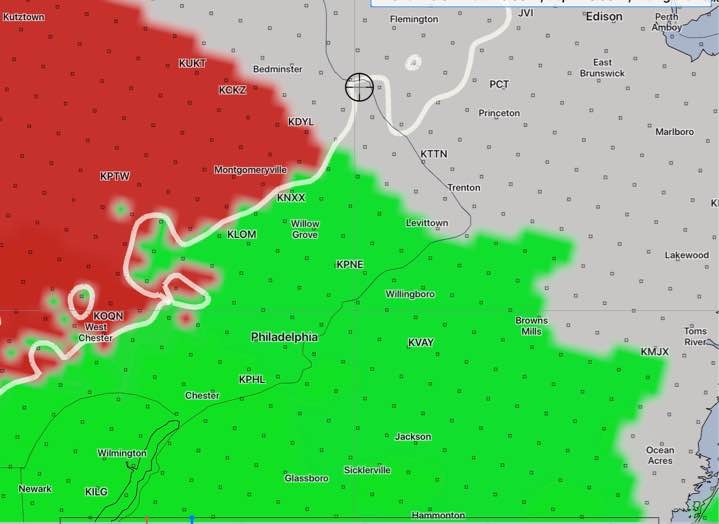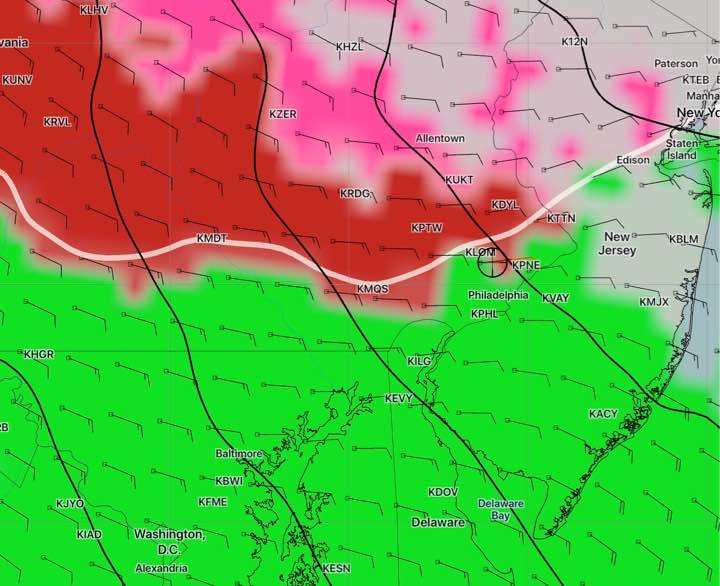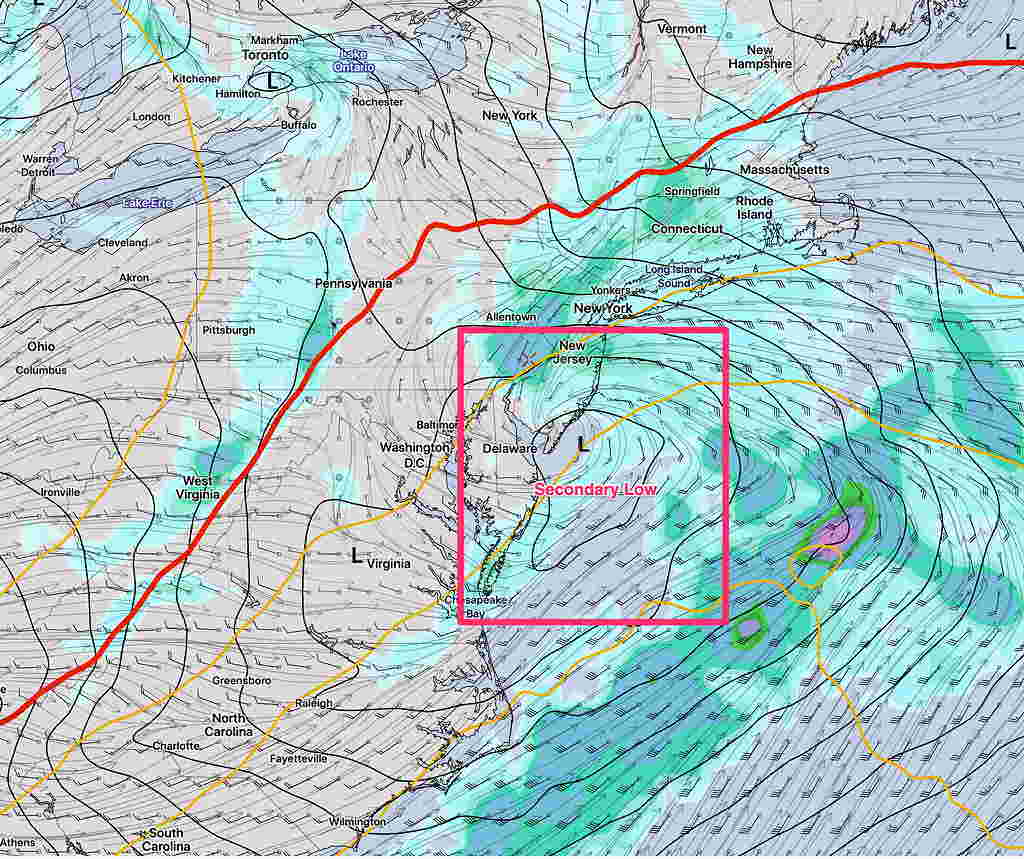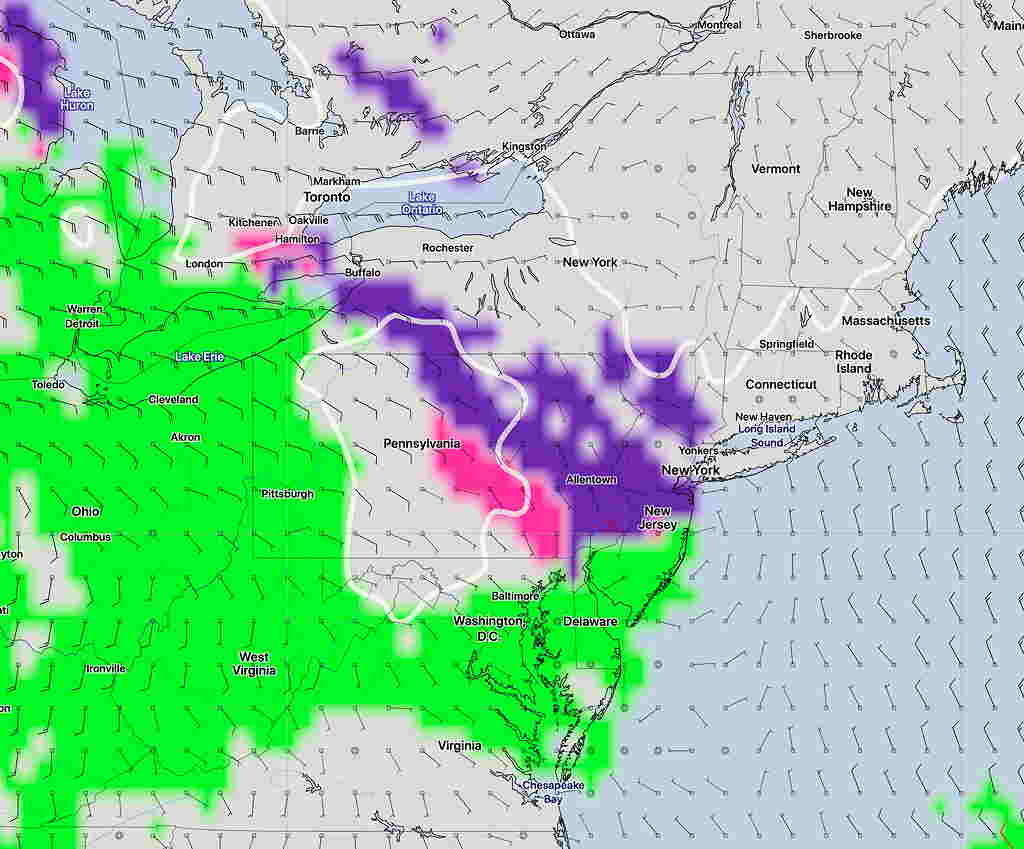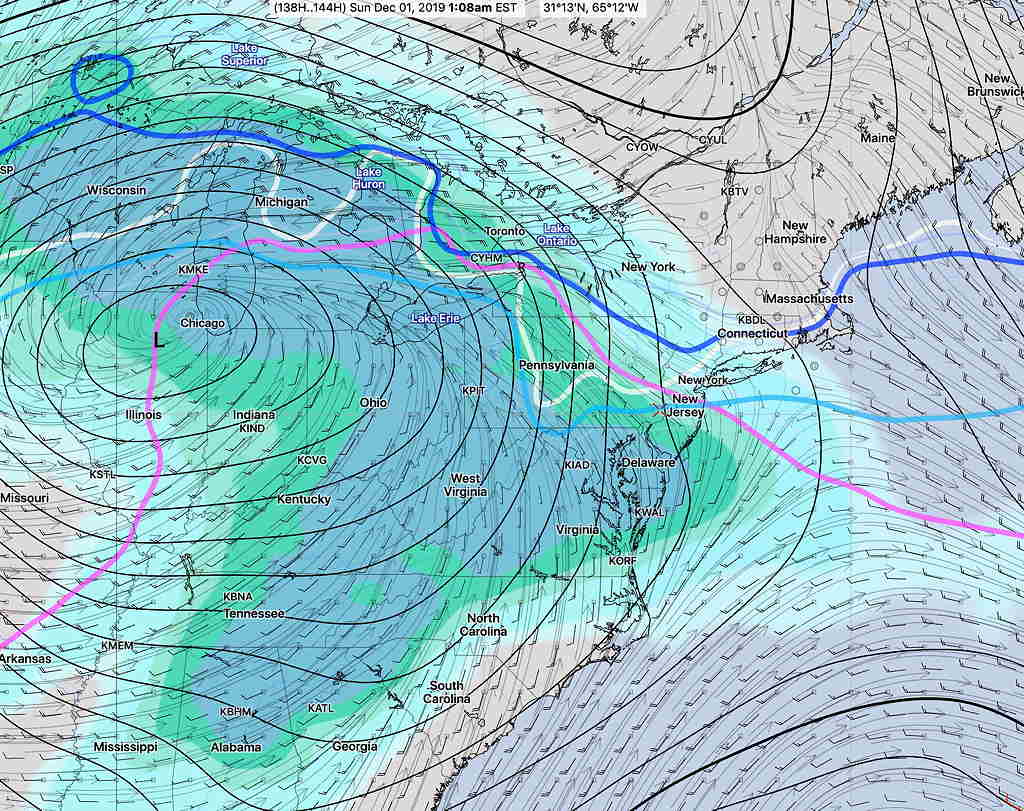Updated Mon 11:10 PM— Tonight’s GFS has a significant snow for us. A large change from its previous runs. Details Tuesday morning.
Updated Mon 07:40 PM— The general trend continues with the Saturday storm side-swiping us to our east. Here’s the statistical version of the GFS (GEFS) showing the range of positions of the low pressure system late Saturday afternoon. Notice that there’s a difference in position but all the tracks/positions are off-shore:
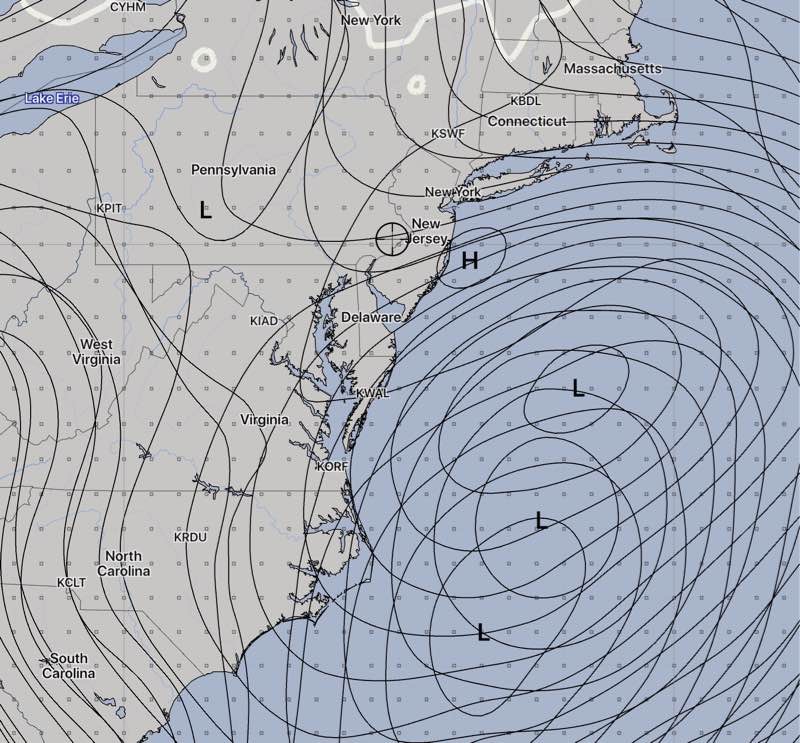
Monday afternoon’s operational GFS has light snow making it into Philadelphia, but has just a coating. Temperatures above freezing. Still too far in the future to make a meaningful forecast.
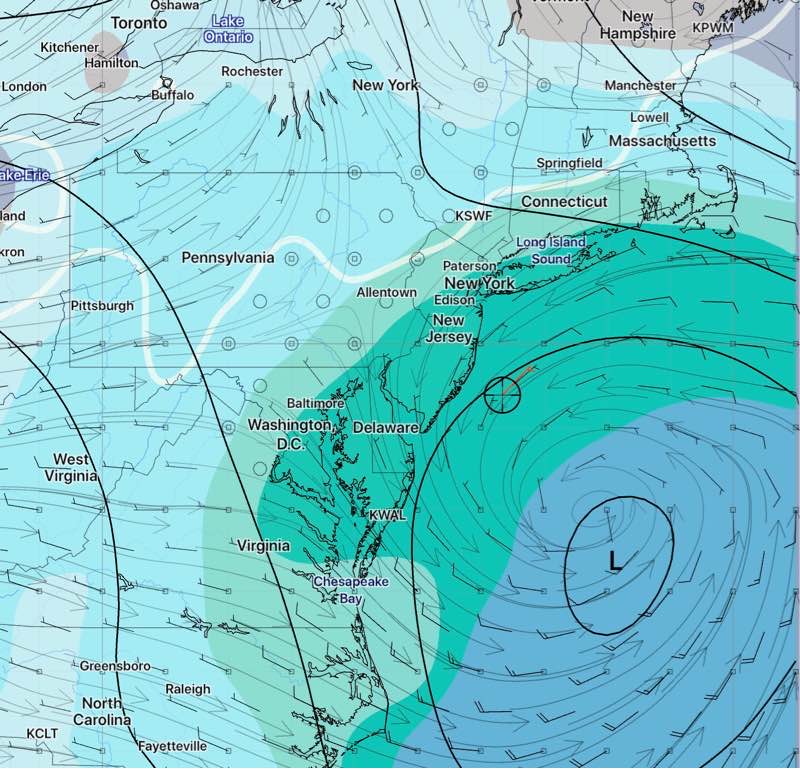
I heard on the news/weather tonight that “whether we get some snow depends on the track of the storm”. Isn’t that the purpose of a forecast? I can’t make these things up.
Updated Mon 08:10 AM— Last night’s models have not clarified the forecast for next weekend. The trend has been for the storm to be further off the coast, but the track and development is still considered to have above average uncertainty.
…from Sunday—
This afternoon’s clouds were expected and forecast, as an upper air disturbance rotates over us from the upper low pressure system associated with the rain that passed through yesterday.
As mentioned in last Thursday’s post, some of the extended range models are suggesting the development of a coastal low this coming weekend. (The extended range forecasters at the NWS have described the coming weekend’s weather as having higher than usual uncertainty. )
That said, this morning’s GFS, GEFS, CMC and ECMWF models are showing some sort of coastal low for us in an unclear time frame ranging from Saturday afternoon into Sunday. The Canadian model shows the most developed snow storm for us and isn’t necessarily correct:
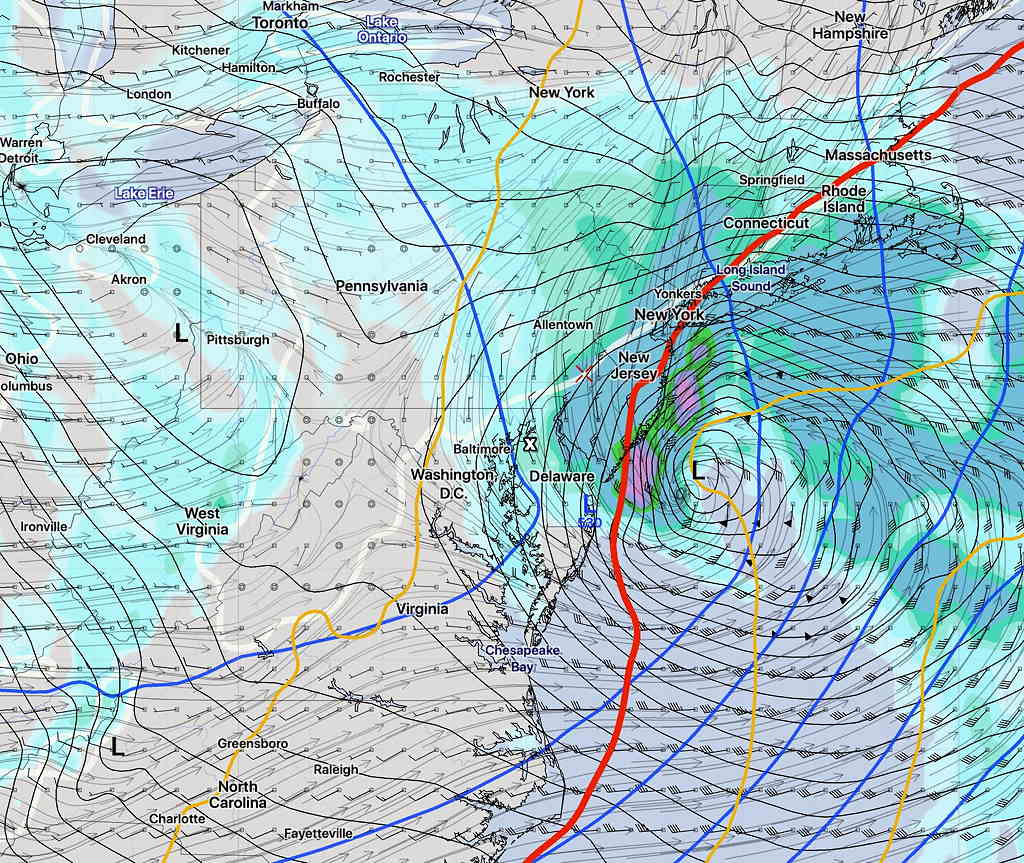
The GFS shows a low with less development and faster moving:
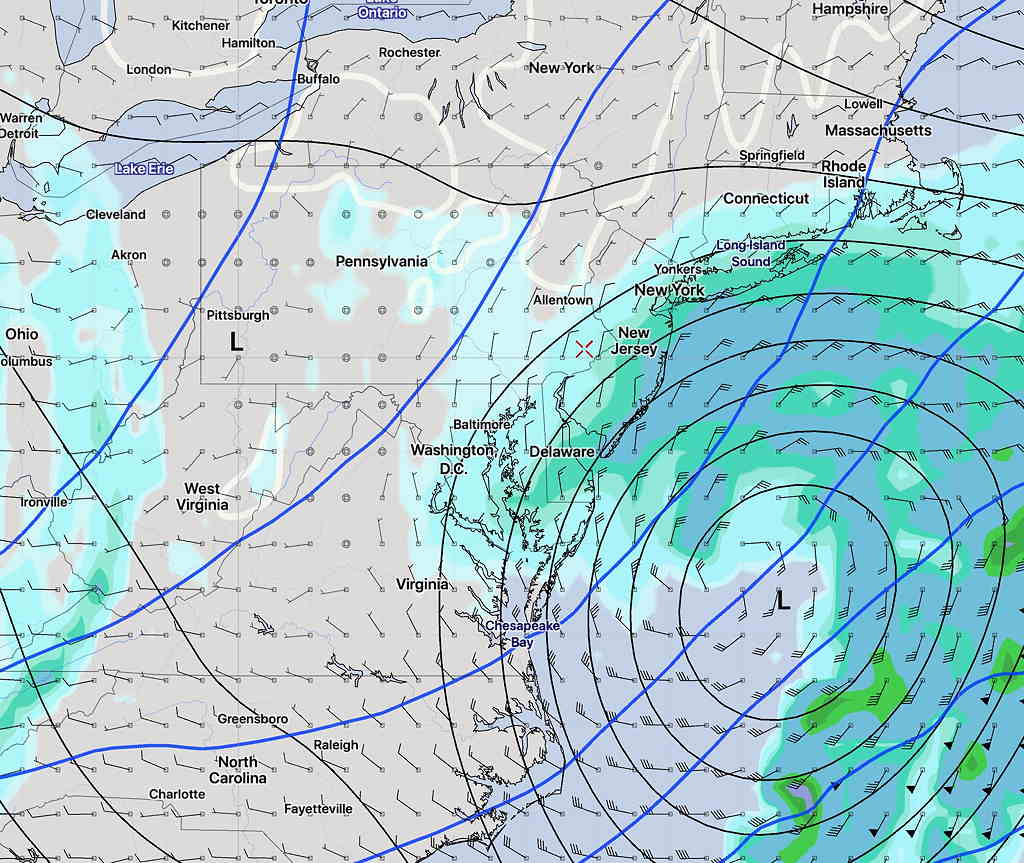
The latest GFS Ensemble forecast (GEFS) (statistical) shows a low that is least developed and slowest:
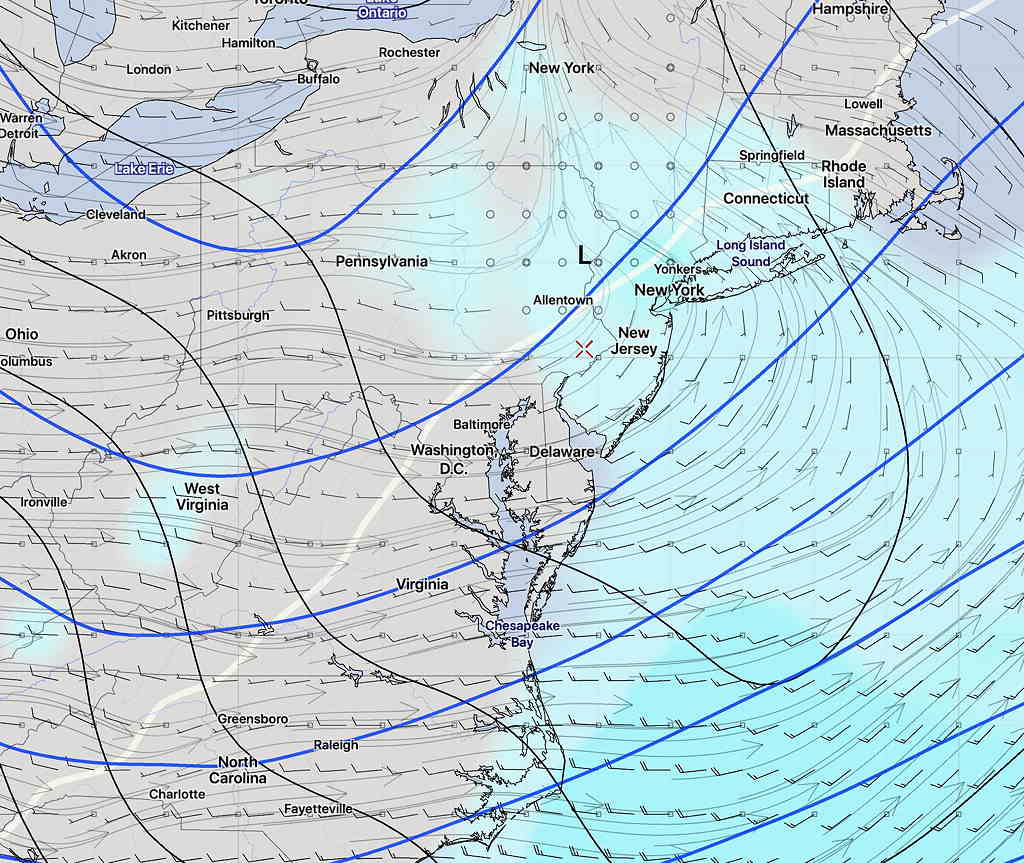
I wouldn’t go out and replace your snow shovel just yet, but it’s something to keep an eye on.
Amazingly, this is the first time this entire winter season where anything resembling a coastal snow storm presented even as a possibility.
Last year, we had multiple ‘potential’ snow storms that all ‘evaporated’ as we got closer to the time of the actual event. This may be no different, especially with little model agreement. Stay tuned.

